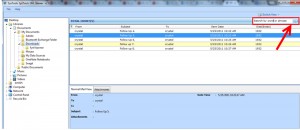
- #Awstats multiple site statistics viewer how to
- #Awstats multiple site statistics viewer install
- #Awstats multiple site statistics viewer update
- #Awstats multiple site statistics viewer archive
- #Awstats multiple site statistics viewer zip
It’s equivalent to error_log / path / to / log. If you set your errors log like this : error_log / path / to / log. Nginx by default output logs that already can be read by awstats, as long as you use the Combined format.
#Awstats multiple site statistics viewer install
On debian squeeze, awstats install things in 3 places :

Install Awstats apt - get install awstats Creating a configuration file for each vhost.For those looking to improve or maximize their site according to viewer demographics, AWStats information can prove to be invaluable. The information it provides can really provide some insight as to how other people view your site, and who they are. Getting AWStats to parse mail and FTP logs is just as easy, and the online documentation is quite helpful (and the configuration files are very heavily commented).ĪWStats provides a lot of statistics in its pages. Now you can visit and view the AWStats statistics page. This script will also run hourly due to its placement in /etc/cron.hourly/, to keep the database updated.

#Awstats multiple site statistics viewer zip
The awstats_ script is in the awstats-6.95/tools/ directory if you downloaded the tar or zip files. The above assumes certain path locations for where scripts have been installed.
#Awstats multiple site statistics viewer update
Before firing up the new URL, however, you need to update the database, which can be done by creating /etc/cron.hourly/awstats with the following contents: #!/bin/bash if then exec /usr/bin/awstats_ now -confdir="/etc" -awstatsprog="/var/www/awstats/" >/dev/null 2>&1 fi exit 0 You will want to edit the file and at a bare minimum, set the log file to examine: LogFile="/var/log/httpd/intranet-access_log" SiteDomain="" HostAliases="This would tell AWStats that for this configuration file, /var/log/httpd/intranet-access_log is the log file to parse.
#Awstats multiple site statistics viewer archive
(This is assuming that you use the RPMForge package if you grab the tar or zip file, you need to create this file and move the files into place first - you can do this by creating /etc/awstats/ and copying awstats-6.95/from the distribution archive to /etc/awstats/.)įrom there you can also copy that file to /etc/awstats/awstats.as well, to view the statistics for the chosen domain name. This is due to the fact that no configuration has been done as of yet, but we can circumvent this and use the default “localhost.localdomain” configuration file that is present by visiting instead. Then you should be able to visit and be given a good healthy error. There might not be a lot there as of yet, but it should load. Once AWStats is installed, you should be able to immediately get the CGI to load. For the Debian and Ubuntu users, AWStats is available via apt-get or Aptitude. If you run CentOS or Red Hat Enterprise Linux and have the RPMForge third-party repository setup, you can use yum to install the latest version of AWStats, likewise with Fedora.

The current version of AWStats is 6.95, and it can be downloaded from the home page as a tar file, zip file, or noarch RPM file. Whichever works best for you, AWStats can accommodate. Running AWStats every few hours is generally enough to keep the overhead down, but if you look at it rarely, running it as a CGI might be a better fit. It can be run in real time as a CGI script, or can be run periodically from cron to provide static pages. Written in perl, AWStats is probably the most widely used log analysis program. Interested yet? Free information! I’m an information nut and love looking at or making up statistics, so AWStats suits me quite well. Interestingly enough, it can also be used to analyze log files for FTP servers and mail servers. Primarily, it analyzes log files for web servers: Apache, IIS, and others, including proxy servers such as Squid. Seriously, who doesn’t want to know how many hits they get on their website, what page or file is most popular, what operating systems or browsers are visiting, or from what country the majority of visitors is coming from? I think we would all agree that anyone who runs a website likes to know this kind of information.ĪWStats is a best-of-breed log file analysis program.
#Awstats multiple site statistics viewer how to
Vincent Danen shows you how to set up the AWStats log file analysis program on FTP and mail servers and use the information to gain valuable insight on visitors to your website.


 0 kommentar(er)
0 kommentar(er)
